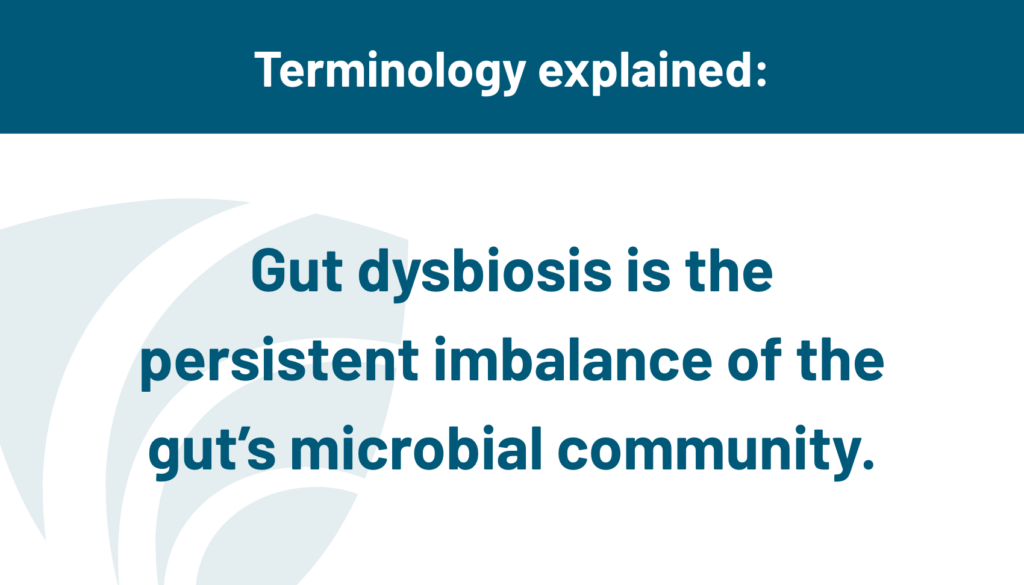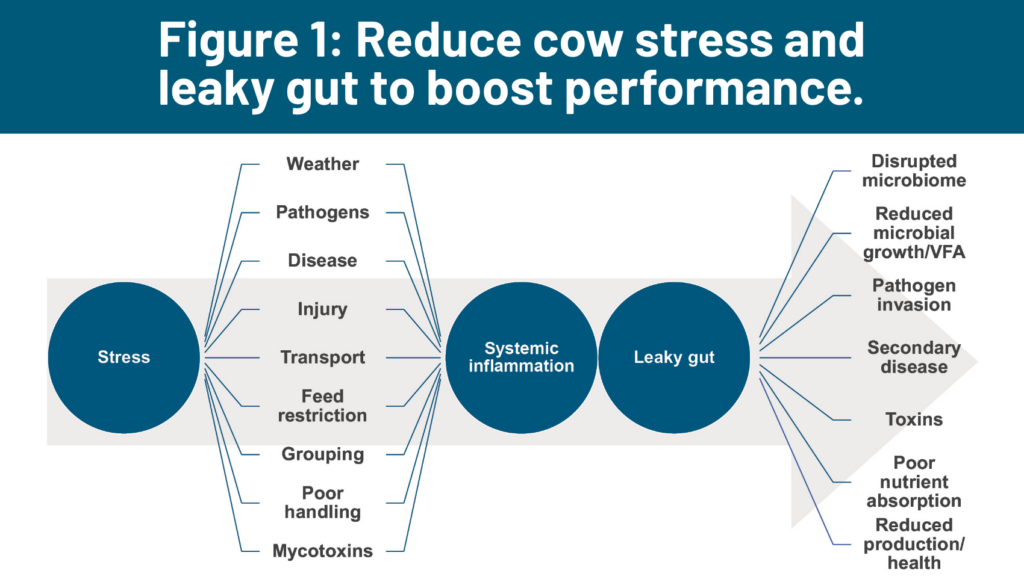Papillon Agricultural Company recently hosted a roundtable with leading researchers in the dairy industry to discuss the impacts of gut health on overall cow performance. Key topics included how gut dysbiosis occurs, the negative ramifications of gut dysbiosis and how feed additives can effectively restore gut health.
How gut dysbiosis occurs.
Dr. Greg Penner, University of Saskatchewan, opened the discussion by emphasizing that stress, which cows face every day, is a key driver of inflammation. Inflammation can lead to leaky gut, as well as damage to other epithelia, including the throat and lungs. The level of gut permeability, or susceptibility to leaky gut, varies depending on location, with the jejunum and cecum being more susceptible than the rumen.
Highlighting a variety of work, Dr. Penner explained that off-feed events during times like illness, weaning and even infrequent feed push-up lead to reduced gut barrier function and undesirable changes in intestinal morphology (including reductions in absorptive capacity). Off-feed events were also linked to changes in ruminal volatile fatty acid production, buffering and acidosis which impact feed utilization and energy absorption in the cow.
One key takeaway? Systemic inflammation can be both a trigger for or the result of gut, mammary and lung impairment. Whether epithelial impairment or systemic inflammation comes first, the result is a reduction in overall animal health and performance.
The negative ramifications of gut dysbiosis.
Reiterating that stressors, such as heat, transportation, pathogens, mycotoxins and abrupt diet changes, lead to gut dysbiosis, Dr. Rand Broadway, USDA-ARS Livestock Issues Research, further developed the day’s theme by discussing the negative ramifications of gut dysbiosis.
These include reduced feed digestion and absorption, microbiome dysbiosis, leaky gut, immune activation, pathogen growth and migration and disruption to neuroendocrine signaling in the gut. His data suggested that even a few hours of stress can lead to extended periods (days to weeks) of dysbiosis.
In his work with pathogen models, Dr. Broadway has found that the use of feed additives, such as live yeast, can reduce the negative effects of stress on immune activation and pathogen growth and migration. Feed additive source, breeds and strain all affect the ability of the additive to help manage the negative impacts of stress and gut dysbiosis. New work coming out of his group suggests the environment may be a key player in a cow’s susceptibility to pathogen challenges, such as E. coli and Salmonella, but there is still much to learn in this area.
How feed additives can help restore gut health.
Dr. Devan Paulus Compart, Technical Services Manager for Papillon Agricultural Company, rounded out the discussion by summarizing the link between stress, inflammation, leaky gut and the negative ramifications of leaky gut (Figure 1). She emphasized the value of using feed additives as a tool to support gut health.
She also highlighted the importance of considering a blend of ingredients rather than a single ingredient product to increase the consistency of performance and health improvements within a herd. Dr. Paulus Compart encouraged all to think more critically about the use of feed additives and outlined tools to detect gut dysbiosis on the farm, such as manure washing and total tract digestibility testing.
Overall, this discussion provided keen insight on how to identify gut dysbiosis in cows and reduce it with management, environment and nutrition changes.
Click here to view the original article on Feedstuffs.







